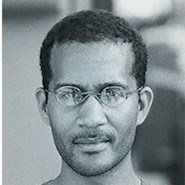This article is the second in the series “Equity and Infrastructure: How Infrastructure Influences Social Equity,” which is being published by Civil Engineering magazine and the Civil Engineering Source over the next several months.
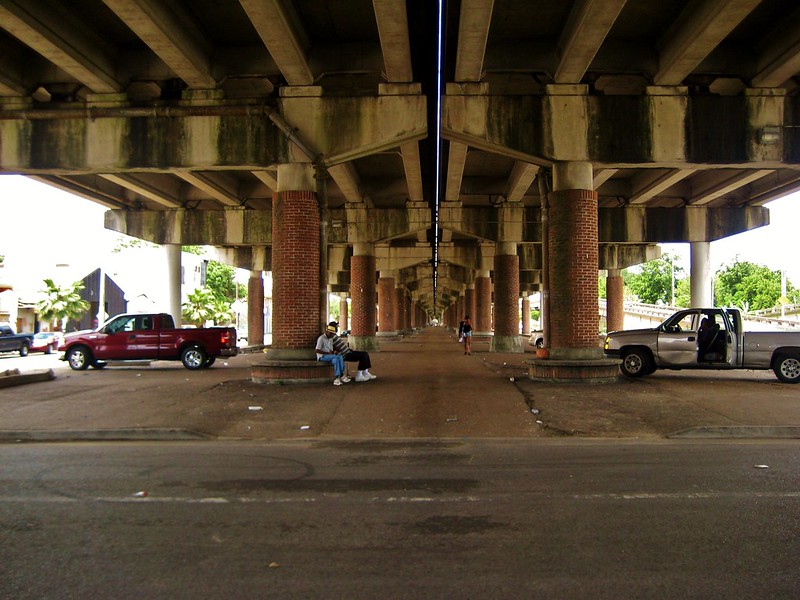
The federal interstate highway system was a momentous undertaking, by some accounts the largest public works project in the history of the world. Writer Tom Lewis, in his 1997 book, Divided Highways: The Interstate Highway System and the Transformation of American Life (New York City: Viking Penguin), described the scale thusly: “Imagine the state of Connecticut knee deep in earth; that’s how much was moved for the interstates. Or a wide sidewalk extending from the earth to a point in space five times beyond the distance to the moon; that’s how much concrete was poured for the interstates.”
“Some people would say we did a good job (and that) we’re the envy of the world with our highway system,” says Joseph Kane, a senior research associate at the Brookings Institution. “They’re not wrong in some ways. We wouldn’t have achieved some of the economic growth we achieved without this network.” A 1996 report prepared for the American Highway Users Alliance estimated that the highway system returned $6 of value for every $1 invested.
But clearly, Kane adds, the highway system also hurt some communities “in some pretty marked ways.” The interstates, in some cases, cut huge swaths through vulnerable, largely Black, urban neighborhoods, accelerating forces of segregation as described by historian Raymond A. Mohl in a 2002 paper for the Poverty & Race Research Action Council, “The Interstates and the Cities: Highways, Housing, and the Freeway Revolt.” The interstates’ placement triggered what Mohl referred to as a “spatial reorganization of residential neighborhoods.”
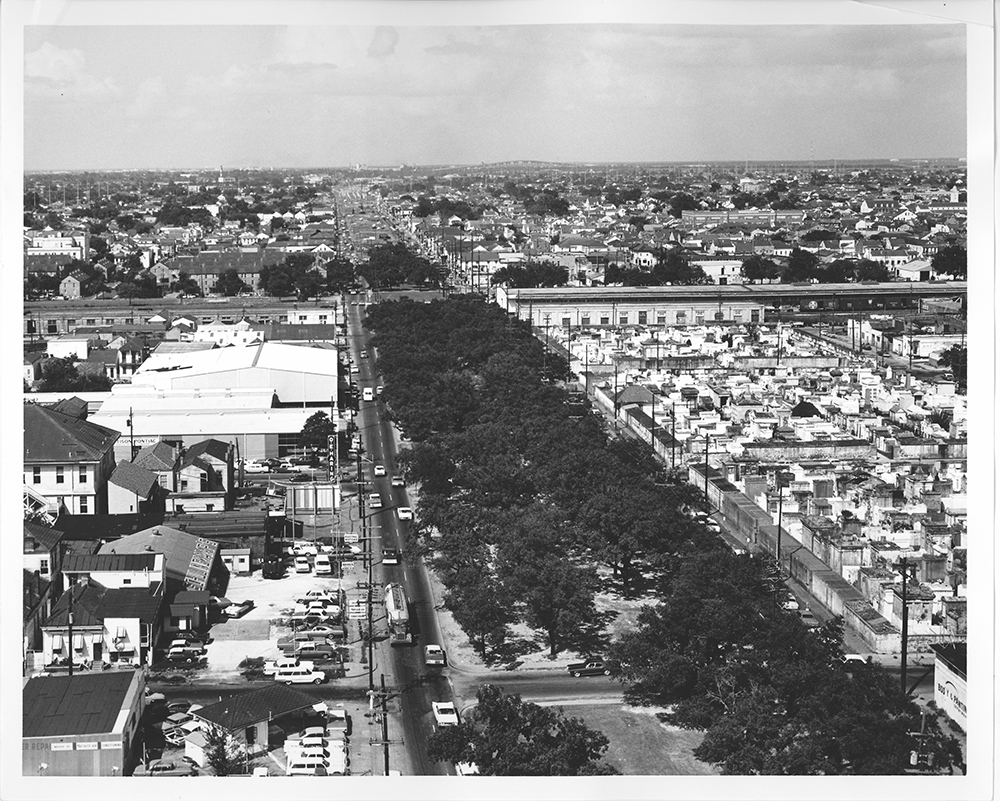
According to Mohl, African Americans uprooted by the highways were often displaced into “working-class white neighborhoods on the fringes of the Black ghetto where low-cost housing predominated.” Those white people then fled for the suburbs, and the Black residents who were unable to follow were largely stuck in what became “second ghettos.” This, Mohl argued, helped mold the “sprawling, densely populated ghettos of the modern American city.”
We tend to think of the interstates as a product of the 1950s, but their roots go back much further. The federal Bureau of Public Roads, the precursor to today’s Federal Highway Administration, dates to 1916 when President Woodrow Wilson signed the Federal Aid Road Act, authorizing $75 million (about $1.9 billion in today’s dollars) in aid to help states cover half the costs of road building.
Future President Dwight Eisenhower famously appreciated the value of roads — first as a member of the Army’s first transcontinental car caravan in 1919, a 62-day excursion over inadequate roads that slowed the convoy of nearly 300 officers and soldiers to just 5 mph, and much later as the Allied commander in World War II, when he admired the efficiency of the German autobahn.
After years of planning and debate over funding, Congress passed the Federal-Aid Highway Act of 1956. It authorized a 41,000 mi limited-access highway system that would be funded through a Highway Trust Fund, “derived from excise taxes on fuel and tires,” Mohl wrote. “The federal government would provide 90% of the cost, with the states contributing the remaining 10%.” The BPR would provide oversight but “state highway departments would be responsible for determining the interstate routes and building the roads.”
The legislation budgeted $27.5 billion (about $243 billion today) for the project and targeted a completion date in 1972. Of course, the original highway system wasn’t fully built out until 1992, and the total cost of the system was $128.9 billion, according to the FHWA.
Social engineering
Building the interstates gave engineers a chance to show off their skill, designing and constructing 41,000 mi of highways, 16,000 entrances and exits, and, according to Lewis,“nearly 55,000 bridges and overpasses and scores of tunnels.” It would require heroic construction efforts in seemingly impassable locations, as was the case in Glenwood Canyon, on the Western Slope of Colorado.
But it also had the effect — mostly unintentional but sometimes not — of creating a kind of social engineering. It required seizing more land by eminent domain than “had been taken in the entire history of road building in the United States,” according to Lewis.
The justification for siting the highways through central cities was linked to the goal of what was known as the urban renewal movement of the 1950s and ’60s, and the two efforts must be understood in concert. The urban renewal movement developed out of the 1949 Housing Act, which made federal funds available to identify and clear out so-called slums in American cities, paving the way for redevelopment. Much of the identified urban renewal land was in poor and Black neighborhoods. And while the highway system plans impacted white working class and other ethnic neighborhoods — and even threatened some more affluent neighborhoods — they were largely built where land was cheap and political opposition was least likely to be organized or effective. In other words, poor neighborhoods that were predominantly home to people of color.
Mohl argued that highway planners in the 1940s believed that “new urban highways … would both revitalize the central city and permit better housing and living conditions in the suburbs.” This turned out to be true — but restrictive covenants in those suburbs meant that those who could enjoy these better conditions were mostly white.
By the 1960s, federal highway construction was demolishing 37,000 urban housing units each year; urban renewal and redevelopment programs were destroying an equal number of mostly low-income housing units annually. Mohl cited planning scholar Alan A. Altshuler, who estimated that the highway system would displace up to 1 million people, a disproportionate number of them Black.
“In states around the country, highways disproportionately displaced and destroyed Black homes, churches, schools, and businesses, sometimes leveling entire communities,” wrote law professor Deborah N. Archer in the Iowa Law Review earlier this year in “Transportation Policy and the Underdevelopment of Black Communities.” Although billed as an opportunity to remove blight, highways often tore through once-vibrant communities, ripping the social fabric and inflicting psychological wounds on those forced to leave their homes and those left behind.
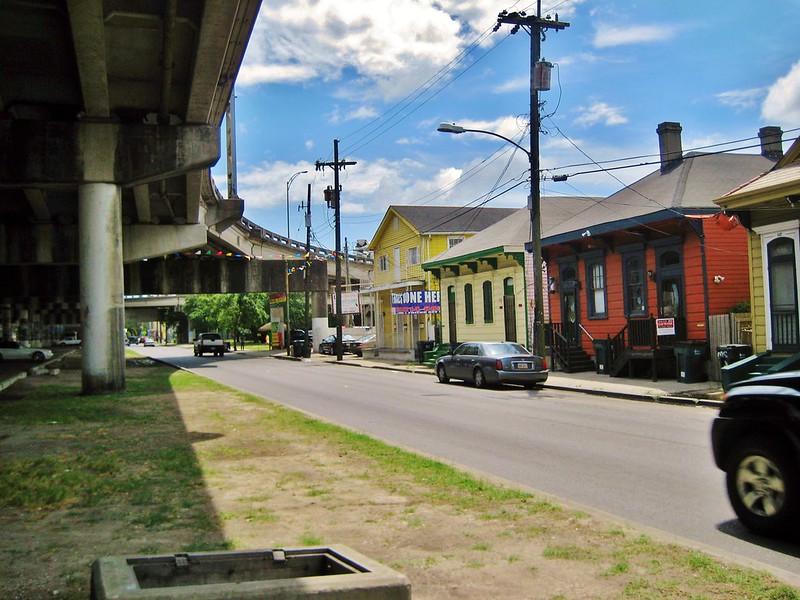
Engineers of the era were not well trained to consider the social effects of their work, “the very real human problems of lives disrupted, neighborhoods destroyed, and livelihoods lost,” as Lewis put it. For example, Pittsburgh’s Lower Hill District — part of a larger neighborhood that was a nationally important center for African American arts and music — was partially destroyed in 1956 to make way for the construction of the Civic Arena (itself later demolished), and, several years later, the construction of Interstate 579. Together the projects, which disconnected the neighborhood from the downtown, led to the demolition of 1,300 buildings, the loss of 400 businesses, and the displacement of 8,000 residents, most of them Black.
“We know the word slum was part of the language being used to advance the urban renewal initiative on the federal level,” says Marimba Milliones, the president and CEO of the Hill Community Development Corp., which is working now to equitably redevelop the neighborhood. “It had to be declared a slum in order to advance the urban renewal initiative, and so therefore it was a slum.” Milliones cautions against romanticizing the condition of the buildings — many were not in great shape — but she points out that, as in any city, “there are ways to preserve property and to stabilize property to make sure it can last. We’re left with a lot of that in the middle and upper Hill District now. The question is, was the declaration of it being a slum even accurate, from an engineering, from an architectural, from a built environment standpoint?”
This scene played out in cities across the country; in Miami, planners rejected an abandoned rail corridor at the western edge of downtown for the site of I-95, instead shifting it a few blocks west — right through the center of Overtown, a predominantly Black neighborhood. In New Orleans, the beautiful Claiborne Avenue, lined with two rows of immense oak trees, served as the cultural and commercial center of the Black community. The trees were uprooted and 500 homes demolished to make way for I-10, which opened in 1968, devastating the community. A protest poster in Washington, D.C., criticized the highway as representing “white men’s roads through Black men’s homes.”
To be sure, many of these urban neighborhoods were poor with substandard housing — but they remained coherent, socially vibrant communities.
Pushback against freeways gathered momentum early on, in poorer neighborhoods and more prosperous ones. Passage of the Federal-Aid Highway Act of 1962 represented a first tentative effort to curb the authority of state highway departments and bring other voices to the process of making decisions about interstate routing. More affluent communities were able to organize and resist federal highway planners for years and block many projects, a process that came to be known as the highway revolts.
Equitable construction
There’s little doubt that some planners and engineers were cognizant of the racial implications of the freeway construction through America’s cities. Mohl noted that “one former federal highway official conceded in a 1972 interview (that) the urban interstates gave city officials ‘a good opportunity to get rid of the local n-----town.’”
Shannon Bruffett, a doctoral candidate in the University of South Florida history department, is completing his dissertation on the impact of federal public housing, interstate highway construction, and urban renewal programs on Black communities in Tampa, Florida. He contends that interstate highway construction in Tampa was one segment of a coordinated effort that also employed the construction of public housing and urban renewal programs to eliminate Black communities throughout the city, including the largest African American enclave — commonly known as the Scrub — which was once home to as many as 6,000 people of color. “It is almost incomprehensible to think that a city, year after year, through every federal program available, would work to displace those who have so little,” Bruffett says.
According to Norman Garrick, Ph.D., a professor of civil and environmental engineering at the University of Connecticut, there probably were some people who had racial motivation, “but I don’t think that was necessarily the majority,” he says. “The bigger thing for me is not so much the motivation of planners in terms of being racist. The bigger issue for me is that some of the tools, techniques, and algorithms we developed — refined in the 1950s — definitely had unintended consequences of supporting inequitable treatment of racial minorities and also of poor people and also supporting a totally car-dependent society, one in which all other modes of transportation were pushed aside and marginalized.”
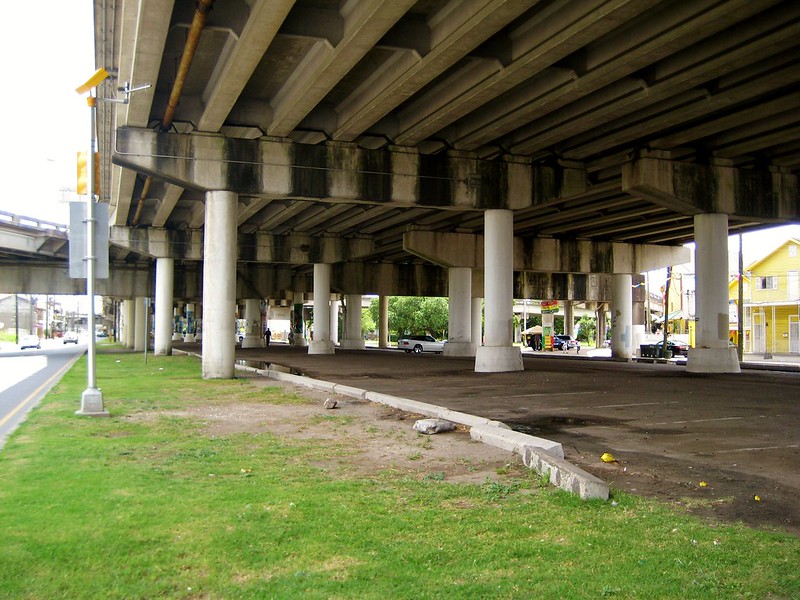
Garrick refers to “engineering economics,” which prioritized cost efficiency above all, as the method that made extending highways through poor neighborhoods where land was cheap appear to be the correct decision. He says poor modeling based on expected traffic growth did not take into account how building the road itself would greatly impact those projections.
“There is a legacy of harm that has come from these decisions,” Kane says. “Benefits of infrastructure can be long-lived, but the harms can (also) be long-lived.”
Indeed, researchers at Carnegie Mellon University concluded in a paper published in ASCE’s Journal of Construction Engineering and Management last year that low-clearance bridges, which tend to prevent the use of some types of public transportation, were more common in neighborhoods with more racial minorities. According to the paper, restrictive bridge heights “constrict the passage of certain vehicles, which may disproportionately affect those groups who rely more on public transportation, and may thus segregate across different socioeconomic and demographic groups.”
One of the authors of that report, Daniel Armanios, Ph.D., A.M.ASCE, an assistant professor in the Department of Engineering and Public Policy at Carnegie Mellon, told Civil Engineering that the United States still does not have a satisfactory standard approach for incorporating local community and equity concerns in engineering decision-making around bridge siting and clearance heights or other physical infrastructure systems more generally.
Moving forward
Kirk Harris, Ph.D., an associate professor in the urban planning department at the School of Architecture and Urban Planning at the University of Wisconsin-Milwaukee, contends that to move forward with infrastructure development, housing development, and economic development, planners must revise their existing practices and explicitly ask, “What are the relative benefits and burdens of those developments on populations that have been excluded or damaged under the existing set of practices?”
Indeed, the Biden administration has recently made racial equity a key principle of its proposed infrastructure plan. Cities are discussing freeway removal or freeway caps (including over I-579 in Pittsburgh), which can reconnect severed neighborhoods. In Houston, a proposed expansion of I-45 has been put on hold due to environmental justice concerns about displacement as well as air quality.
Harris isn’t just laying down the challenge for planners; he’s also laying it down for engineers. “When you don’t understand your history and you don’t understand the nature of how systems have functioned for vulnerable communities and communities of color, and you fail to appreciate or understand those systems and their impacts over the long run and the inequalities they produce, you’re bound to reproduce them,” he says. “The fact that you may not have known about that history makes you complicit — so you must know.”



